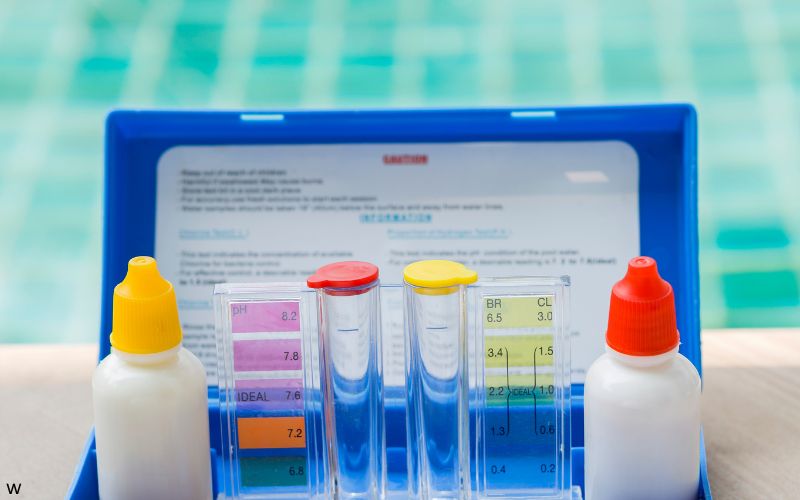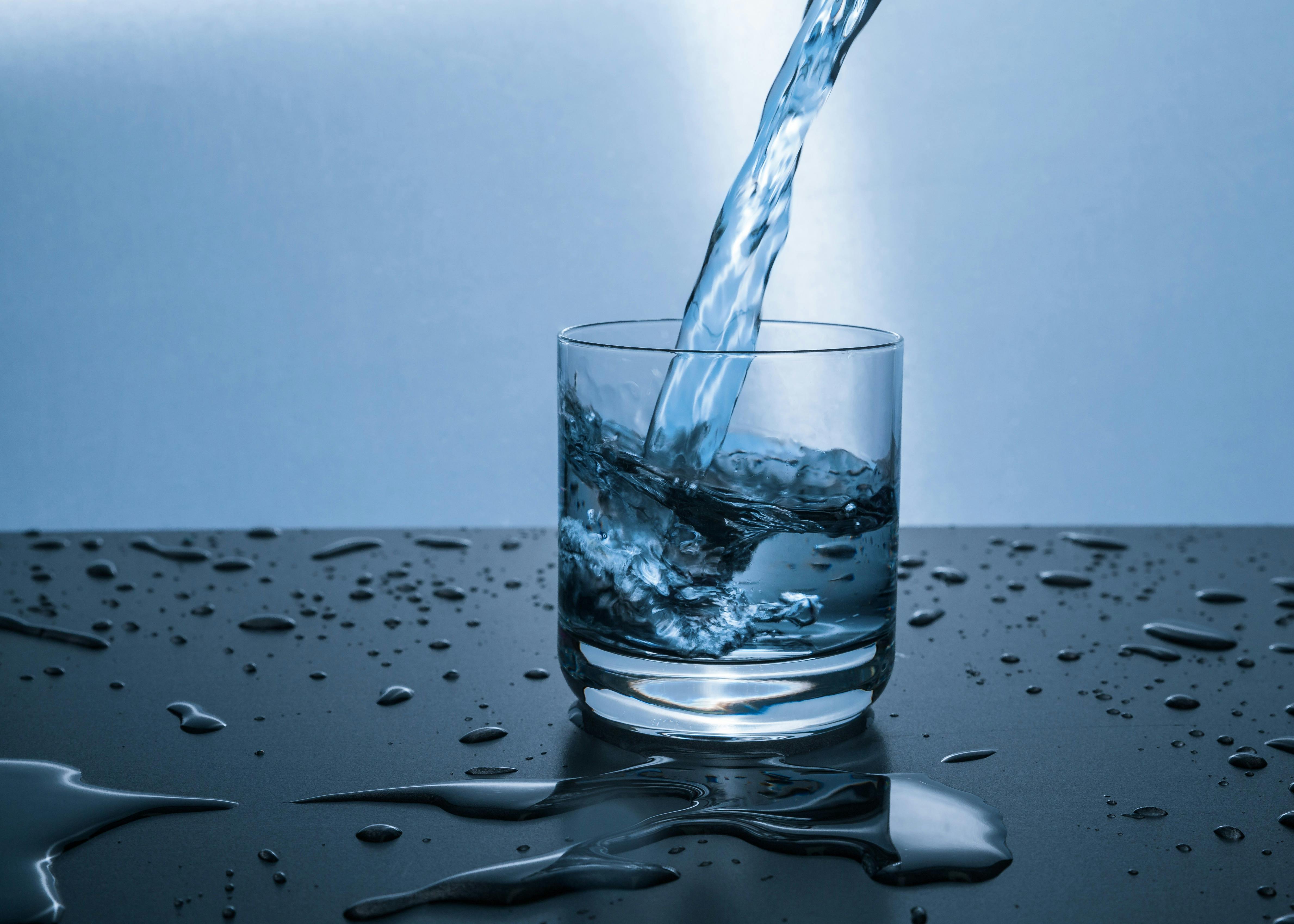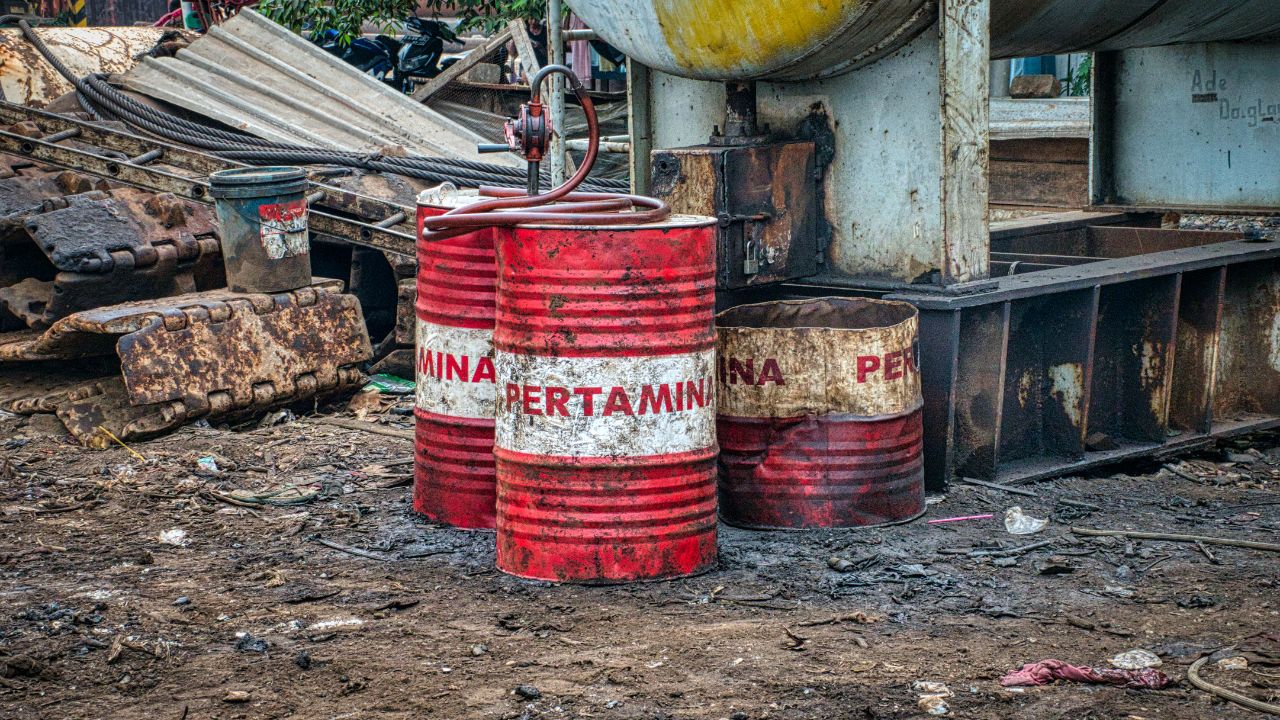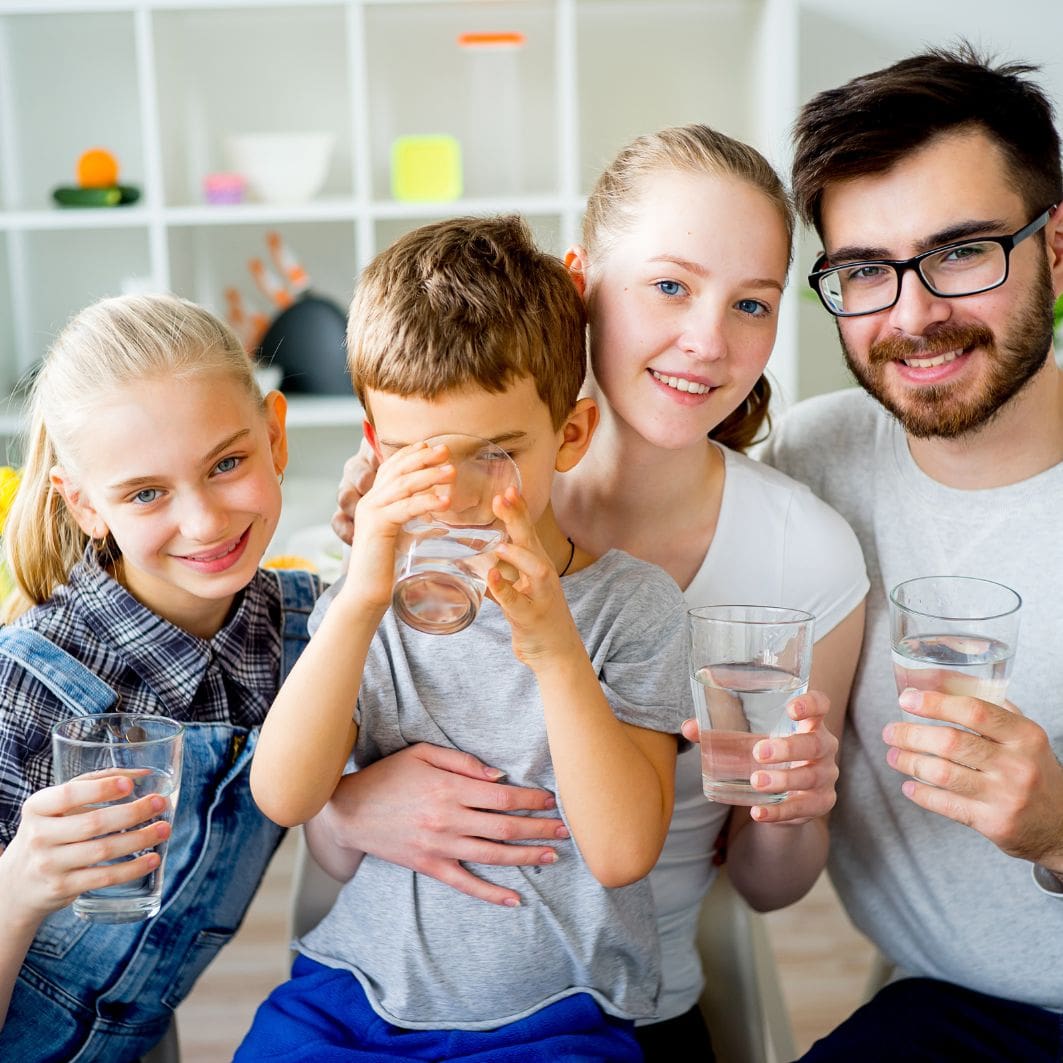Anchorage Water Quality at a Glance
moderate concerns
Is Anchorage Water Safe to Drink?
Yes, Generally Safe – Anchorage’s water comes from pristine glacial sources (90% from Eklutna Lake) and meets all federal standards. However, disinfection byproducts from chlorine treatment exceed health guidelines, including chloroform and haloacetic acids. Low-level PFAS and chromium-6 are also present but below legal limits.
⚠️ Key Concerns for Anchorage Residents
- Disinfection Byproducts: Chloroform levels 20x above health guidelines, haloacetic acids 47-74x above guidelines
- PFAS “Forever Chemicals”: Low but detectable levels of PFOA (0.379 ppt) and PFHXS (1.00 ppt) present
- Chromium-6: Cancer-causing hexavalent chromium at 0.585 ppb (29x above health guidelines)
- Environmental Contamination: PFAS found in nearby lakes (Lake Spenard, Lake Hood) from airport firefighting foam
Read the full report below for detailed analysis, source information, and actionable recommendations for Anchorage residents.
Anchorage – Alaska – Water Quality Report 2025: PFAS Testing, Infrastructure Concerns & Safety across your city
The Anchorage Water and Wastewater Utility (AWWU) provides comprehensive water services to approximately 300,000 residents across the Anchorage metropolitan area, including Chugiak-Eagle River, Peters Creek, Eklutna, and Girdwood. As Alaska’s largest water utility, the system encompasses nearly 1,000 miles of water distribution lines, numerous reservoirs and pumping stations, and advanced treatment facilities that deliver almost 8 billion gallons of drinking water annually to Alaska’s largest city and surrounding areas.
AWWU sources its drinking water primarily from Eklutna Lake located in the Chugach Mountains, with Ship Creek serving as a secondary source. Together these surface water sources provide approximately 90% of Anchorage’s water supply, supplemented by ten high-production groundwater wells that contribute the remaining 10%. The Eklutna water is treated at the Eklutna Water Treatment Facility, while Ship Creek water is processed at the Ship Creek Water Treatment Facility. Anchorage’s water consistently meets all federal and state quality standards, benefiting from pristine source waters surrounded by protected wilderness within Chugach State Park. The utility employs approximately 300 professional staff and implements significant investments in water treatment technology, conservation initiatives, and watershed protection to ensure sustainable water supply for future generations in this unique Alaskan environment.

Anchorage Water Quality: Current Status (2024-2025)
Latest Testing Results
- Comprehensive Monitoring: AWWU collects and tests over 3,000 water samples annually throughout the system, including extensive monitoring at treatment facilities and across the distribution network to ensure water safety.
- Compliance Status: Anchorage’s water consistently meets all federal and state drinking water standards, maintaining compliance with EPA and Alaska Department of Environmental Conservation regulations as of the latest quarter (April-June 2024).
- Pathogen Testing: AWWU has never detected viable indications of waterborne pathogens like Giardia or Cryptosporidium in its treated drinking water, due to protected source waters and effective filtration and disinfection processes.
Water Sources
- Eklutna Lake: Primary source (approximately 85-90% of supply) located in the Chugach Mountains, fed by pristine snowmelt and glacial runoff from the Chugach Mountain wilderness.
- Ship Creek: Secondary surface water source providing additional supply capacity during peak demand periods, also sourced from protected watershed areas.
- Groundwater Wells: Ten high-production wells throughout Anchorage and Eagle River contribute approximately 10-15% of total water supply, tapping into deep aquifers recharged by mountain sources.
- Watershed Protection: Source waters benefit from surrounding protected wilderness areas within Chugach State Park, ensuring minimal human impact and contamination risk.
Advanced Treatment Technology
- Eklutna Water Treatment Facility: The primary treatment facility utilizes a multi-barrier approach including coagulation, flocculation, sedimentation, filtration, and disinfection to remove glacial silt and other particulates.
- Ship Creek Treatment Plant: Similar multi-barrier treatment process to handle surface water from the Ship Creek watershed.
- Disinfection Process: Hypochlorite disinfection is maintained throughout the distribution system to ensure water safety, with fluoride added at 0.7 ppm in accordance with Anchorage Municipal Code requirements for dental health.
Infrastructure Management
- System Storage: Over 50 million gallons of storage capacity in strategically located reservoirs throughout the service area to ensure reliable water delivery.
- Distribution Network: Nearly 1,000 miles of water distribution pipelines (850 miles of distribution system), supplemented by booster pumps and pressure regulating valves to maintain appropriate service pressures throughout the system.
- Monitoring Technology: Advanced SCADA (Supervisory Control and Data Acquisition) systems for real-time monitoring of water quality and system operations across the distribution network.
Community Support Initiatives
AWWU provides extensive customer services through various programs, including online account management, convenient payment options, and responsive emergency services available 24/7 at (907) 564-2700. Educational outreach helps residents understand water quality, conservation practices, and the value of Alaska’s pristine water resources. The utility’s commitment to transparent communication includes publishing comprehensive water quality reports containing federal and state regulated drinking water test results. AWWU’s professional workforce of approximately 300 employees—including treatment plant operators, engineers, laboratory technicians, maintenance crews, and customer service representatives—demonstrates the utility’s commitment to operational excellence and public health protection.
Recommendations for Anchorage Residents

Monitor Your Water
Contact AWWU at (907) 564-2700 to report any water quality concerns or changes in taste, odor, or appearance. For lead service line inquiries, call (907) 311-1300 or email info@lcr.awwu.biz. Residents with older plumbing (pre-1986) may wish to test for lead and other metals, especially after periods of non-use.

Conserve Water
Despite Anchorage’s abundant water resources, conservation is important. Install efficient fixtures, promptly repair leaks, and consider native landscaping adapted to Alaska’s climate that requires minimal irrigation, especially during summer months.

Consider Home Filtration
While Anchorage’s water meets all federal standards, residents may benefit from NSF-certified filters for drinking water to address disinfection byproducts and other contaminants. Activated carbon filters can help reduce chlorine taste and odor, while reverse osmosis systems provide more comprehensive treatment.

Prepare for Winter
Alaska’s extreme cold requires special plumbing precautions. Insulate pipes in unheated areas, maintain a minimum indoor temperature even when away, and know how to safely thaw frozen pipes. During extended absences, consider shutting off your water and draining pipes.

Report Issues
Contact AWWU Customer Care at (907) 564-2700 (available 24/7) for water main breaks, pressure problems, or quality concerns. For sewer issues, contact AWWU directly; for stormwater drain problems, call Municipality of Anchorage Street Maintenance at (907) 343-8277.
Frequently Asked Questions
Is Anchorage’s tap water safe to drink?
Yes, Anchorage’s tap water meets all federal and state drinking water standards. The city’s water comes from Eklutna Lake, Ship Creek, and deep groundwater wells, all of which benefit from minimal human impact and undergo comprehensive treatment including filtration and disinfection.
AWWU conducts over 3,000 tests annually to ensure water quality and safety. The utility’s commitment to water quality is demonstrated by its continuous monitoring and transparent reporting through annual water quality reports available to all customers. Anchorage is fortunate to have some of the best source water in the nation, surrounded by protected wilderness areas within Chugach State Park.
Why does my water sometimes taste different in winter?
Seasonal taste variations can occur due to several factors specific to Alaska’s unique environment:
1. Temperature changes: Colder water temperatures can affect how taste compounds are perceived
2. Source water shifts: During winter months, there may be adjustments in the balance of surface water and groundwater sources
3. Treatment adjustments: Seasonal adjustments to treatment processes may be necessary to address changing water characteristics
4. Home plumbing: In extremely cold temperatures, indoor plumbing may contribute to taste changes
If taste issues persist or seem unusual, contact AWWU at (907) 564-2700 for assistance. Running cold water for a few minutes after periods of non-use can often improve water quality from your tap.
Should I be concerned about lead in Anchorage’s water?
AWWU has never used lead pipes in its system, and Anchorage’s water treatment and distribution systems do not contain lead components. However, homes built before 1986 may have plumbing fixtures or solder containing lead that could potentially affect water quality:
• Service Line Survey: AWWU is conducting a federally-required lead service line inventory, having mailed surveys to 20,000 customers in 2024 to identify any lead service connections
• Water testing: AWWU regularly tests for lead and copper throughout the distribution system and maintains compliance with EPA regulations
• Corrosion control: The utility optimizes water chemistry to prevent leaching of metals from household plumbing
• Home precautions: If your home has older plumbing, running cold water for 30-60 seconds before use for drinking or cooking can reduce potential exposure, especially after periods of water stagnation
For questions about lead service lines, contact AWWU at (907) 311-1300 or email info@lcr.awwu.biz.
Are there water restrictions in Anchorage?
Anchorage generally does not implement mandatory water restrictions due to its abundant water supply from Eklutna Lake, Ship Creek, and groundwater wells. However, voluntary conservation is always encouraged:
Normal Operations:
• No mandatory restrictions on water use during normal operations
• Conservation is encouraged as good environmental stewardship
Emergency Situations:
In rare emergency situations such as major infrastructure failures or natural disasters, temporary restrictions may be implemented:
• Limitations on non-essential water uses
• Public notification through media and emergency alert systems
For current information on water system status, contact AWWU at (907) 564-2700 or visit awwu.biz.
Quality News About Your Water
Get the comprehensive water quality news coverage you need with our dedicated US Water News Service. From coast to coast, we deliver in-depth reporting and expert analysis on PFAS contamination, EPA regulatory changes, infrastructure developments, and emerging water safety issues affecting communities nationwide. While mainstream media only covers the biggest stories, we provide the detailed, ongoing coverage that helps you understand the full scope of America’s water challenges. Whether you’re a concerned citizen, water professional, or community leader, our daily updates and analytical insights keep you informed about the issues that matter most to public health and environmental safety.
Contaminants of Concern

Disinfection Byproducts
Source: Formed when disinfectants such as chlorine used in water treatment react with naturally occurring organic matter; may be more prevalent during summer months when water temperatures are higher and organic matter levels increase
Health Effects: Long-term exposure to elevated levels of trihalomethanes (TTHMs) and haloacetic acids (HAAs) may increase risk of certain cancers and potentially affect liver, kidney, and central nervous system
Current Levels: Monitored quarterly throughout the distribution system with levels maintained below EPA maximum contaminant levels. Recent testing shows chloroform at 7.92 ppb and total trihalomethanes at 8.48 ppb EPA Limits: 80 ppb for total trihalomethanes (TTHMs) and 60 ppb for haloacetic acids (HAA5)

PFAS “Forever Chemicals”
Source: PFAS contamination in Anchorage area primarily stems from firefighting foam use at Ted Stevens Anchorage International Airport and Joint Base Elmendorf-Richardson; environmental contamination found in nearby lakes and Ship Creek
Health Effects: Linked to liver and kidney damage, reproductive and developmental harm, immune system impairment, and certain cancers; these chemicals persist in the environment and accumulate in the human body over time
Current Status: Municipal water supply contains detectable but low levels of PFAS (PFOA at 0.379 ppt, PFHXS at 1.00 ppt); nearby recreational waters show much higher contamination (Lake Spenard/Lake Hood at 952 ppt, Ship Creek at 22.6 ppt) EPA Limits: New maximum contaminant level of 4 ppt for PFOA and 10 ppt for PFHXS
Please read – our information
The information presented on cleanairandwater.net is compiled from official water quality reports, trusted news sources, government websites, and public health resources. While we strive for accuracy and thoroughness in our presentations, we are not scientists, engineers, or qualified water quality professionals.
Our mission is to present water quality information in an accessible, real-world format that helps people understand what’s in their water and make informed decisions about their health and safety. We believe that complex environmental information should be available to everyone in a format that’s easy to understand.
We make every effort to ensure our content is current and accurate, but we cannot guarantee that all information is complete or error-free. This website should not replace official communications from your local water utility or health department. We always recommend consulting official sources for the most up-to-date information regarding your specific water system.
Clean Air and Water is not liable for any unintentional errors, omissions, or outdated information. The content on this site is provided for informational purposes only and should not be considered professional advice.


